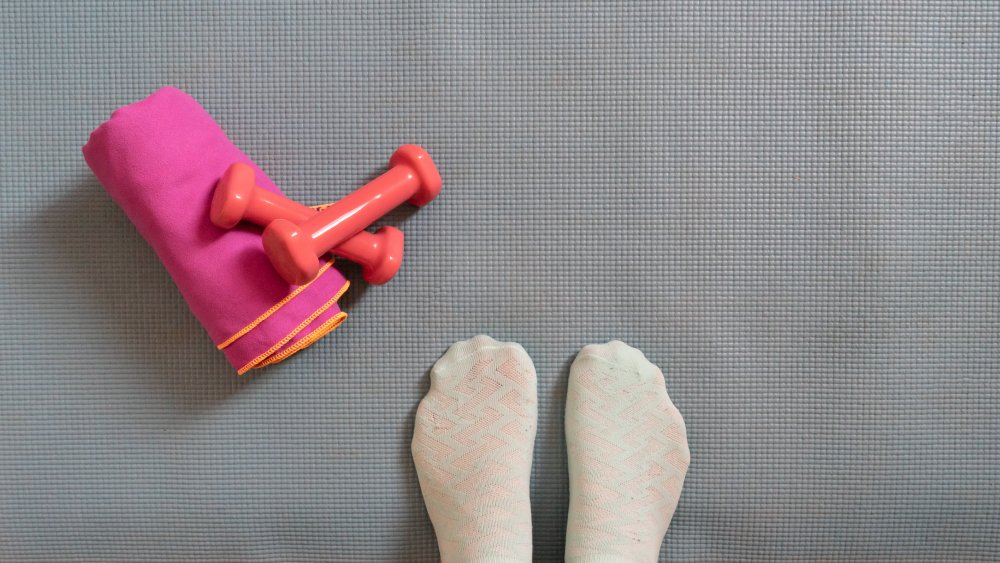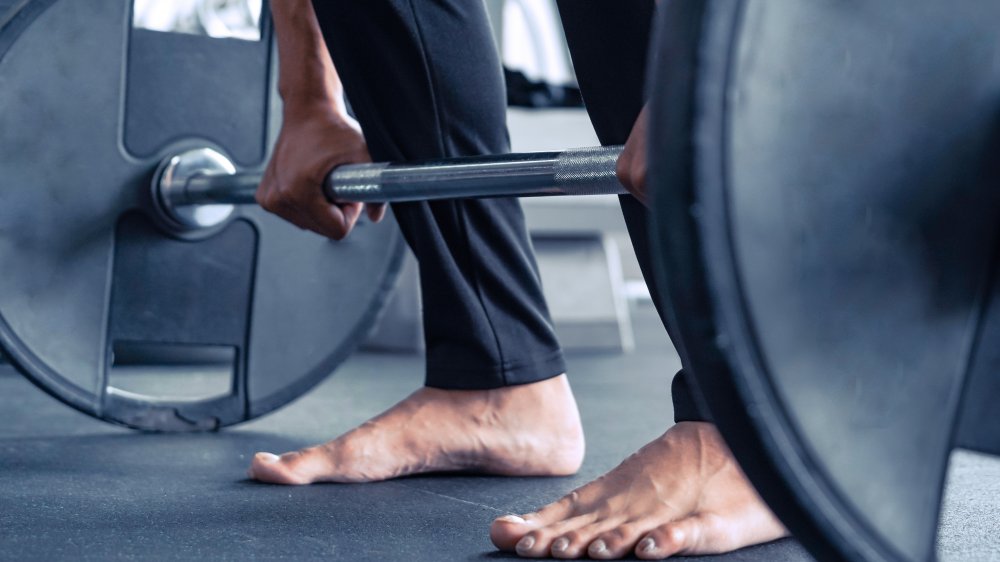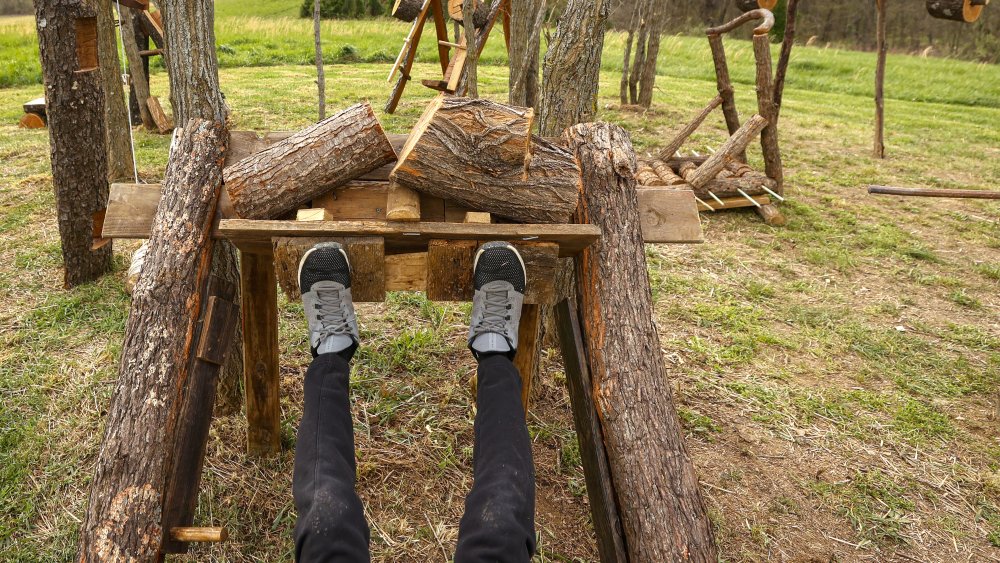The Real Reason You Should Start Lifting Weights In Your Socks
Have you ever been to the gym and seen somebody lifting an impressive amount of weights, and then you happened to notice they're barefoot or just wearing socks? You might think it looks kind of dangerous — after all, what if they drop a barbell and it lands on their toe? Steel-capped boots might be a safer bet, you'd think. And, in the case of clumsier weightlifters, this might well be true.
As it turns out, these bare-or-stocking-foot lifters aren't just doing it to show off their stinky feet, nor did their weight training feats literally knock their socks off. New York physical therapist Tyler Nightingale, DPT, spoke with Livestrong on the subject and revealed that there are actually some pretty good reasons why you might want to try lifting in (or out of) your socks.
Benefits of lifting without shoes
According to Nightingale, wearing shoes while you lift means that there's one part of your body that isn't getting max benefits from your workout. "Your foot is packed with 20 muscles that help support standing, walking, and other movements," he says. "A lot of times, wearing a shoe will decrease the activity of these muscles with no relevant upside other than shock absorption." Nightingale advises lifting weights sans shoes in order to increase muscle activity in your feet so they can get a workout, too.
Exercising your feet isn't the only reason why shoeless lifting might be able to benefit you. Nightingale says that lifting without shoes can provide better balance and make you feel more grounded. As a result, you're able to lift heavier weights while reducing the risk of injury. He even says that your form is likely to improve due to the fact that "your brain gets better sensory feedback from the floor via your foot." Powerlifting Technique adds one additional reason you may not have thought of for taking off your shoes before you lift — evidently when it comes to deadlifting, every single aspect of your movement counts. Subtracting the height of shoe soles, even flat ones, reduces the overall amount of work you'll need to do to bring the weight up from the floor to your hips.
When is shoe-free lifting inadvisable?
Lifting in stocking or bare feet may not be for everyone, though, nor does it suit every type of weight training. Nightingale says it should be avoided if you have a condition like osteoporosis or you've had a recent lower-limb fracture. If you're combining your weight training with plyometric exercises, you should also keep your shoes on while doing the latter, particularly if you're performing those exercises on a hard surface.
Also — this should go without saying, but we're going to say it, anyway — be mindful of the surface you're exercising on! If you're lifting outdoors, barefoot is probably not a good idea, since you could get a splinter or step in something gross. Socks won't be much protection against either of these threats, plus you'll also have dirty socks to deal with. If you're exercising indoors on a dirty gym floor, though, maybe don't skip the socks since these at least offer some protection against athlete's foot. One final caveat: should you be exercising on polished wood floors, it's best just to go barefoot since socks might cause you to slip and hurt yourself.


